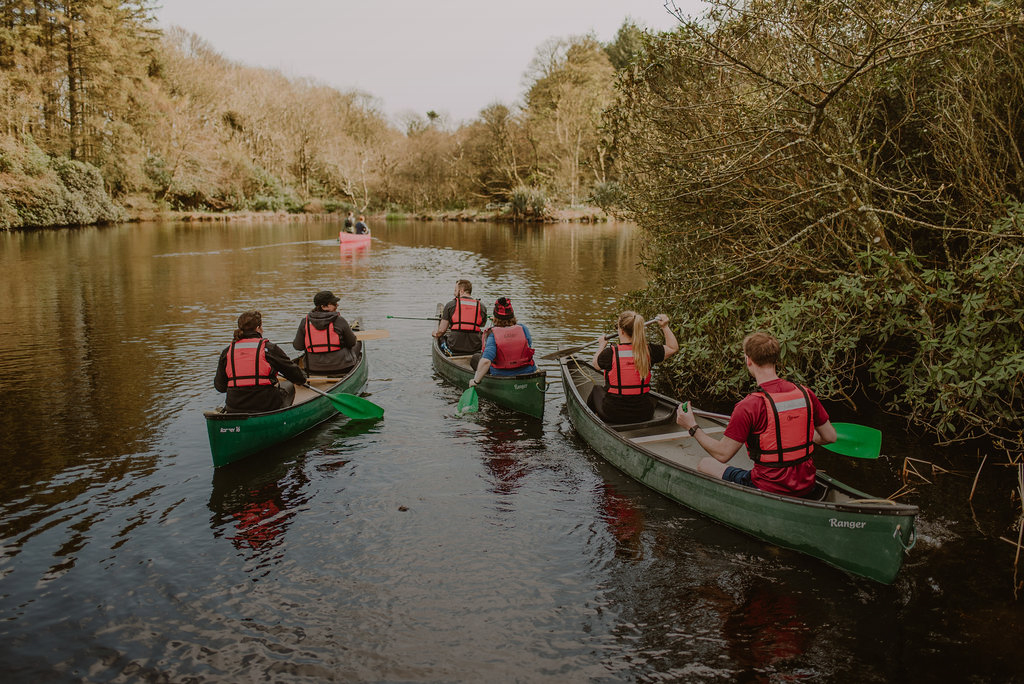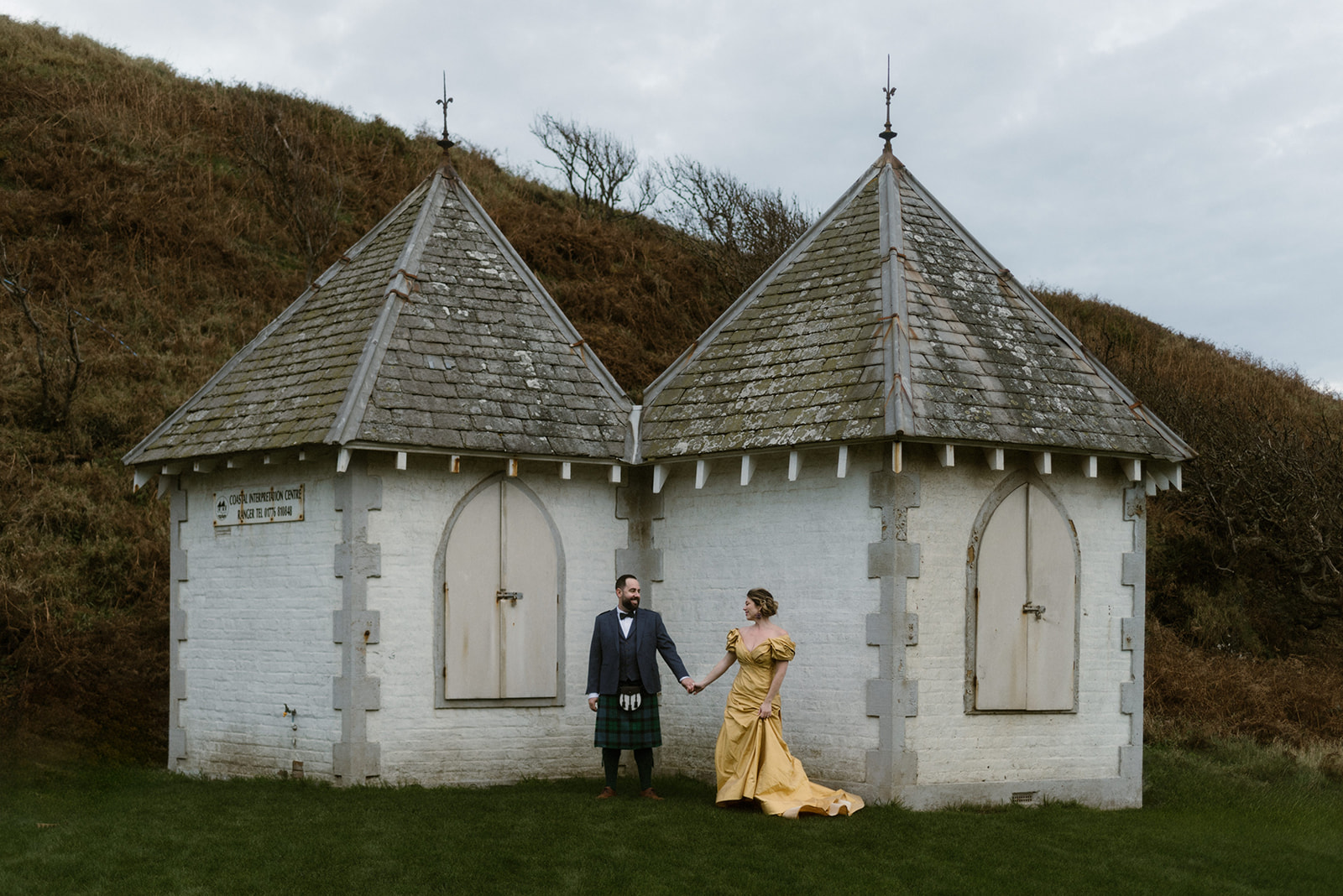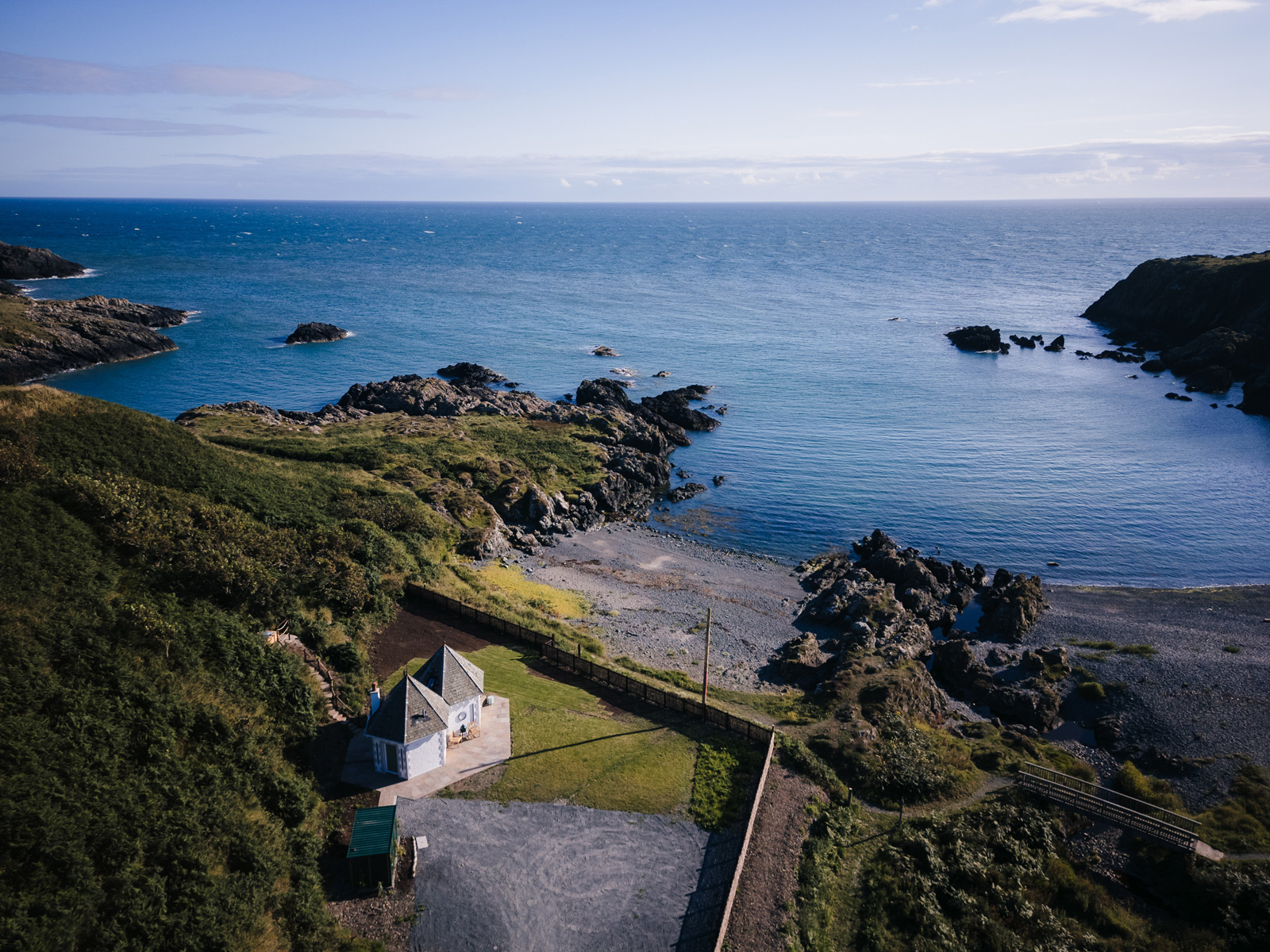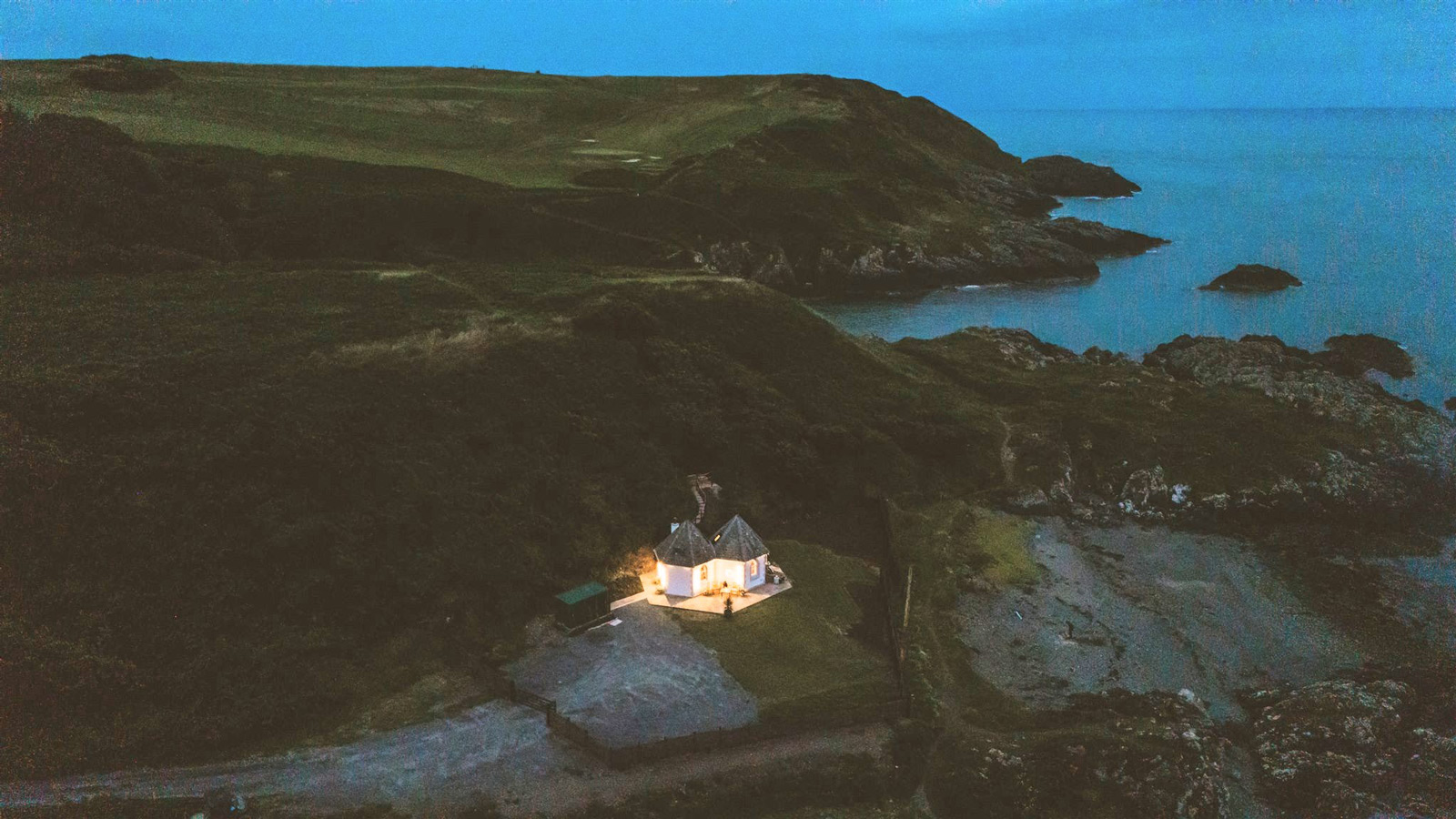Step inside one of Scotland’s most remarkable historical accommodations. You are now residing in a building that stands as a monument to one of the most ambitious engineering achievements of the Victorian era—the first successful submarine telegraph cable connecting Scotland and Ireland.
This distinctive white double octagonal structure has graced the shores of Port Kale since 1852, when it served as the Scottish terminus for the pioneering telegraph cable laid across the treacherous waters of the North Channel. The location was chosen not merely for its engineering advantages, but as Victorian chronicler John G. Bell noted in 1899, because those responsible clearly had “an eye to the scenic beauty of the place.” Standing on the precipitous cliffs overlooking the Irish Sea, your cable hut commands magnificent views of the entire Channel, with the Irish coast clearly visible on clear days.
The story of this place begins with remarkable perseverance. The initial attempts to bridge the Irish Sea by telegraph were met with spectacular failures—the first cable parted within five miles of the Scottish shore in the 1840s when its hemp covering stretched beyond breaking point. A second attempt with iron wire-bound cable also proved futile. It wasn’t until 1854 that success was achieved, with the first working cable stretching from Black Head at the entrance to Belfast Lough to nearby Sandeel Bay, just 200 yards from where you now rest.
Your octagonal sanctuary originally housed the delicate apparatus for testing and maintaining the telegraph cables that carried messages between two nations. By 1870, when the British government nationalized the telegraph system, this single hut accommodated two four-wire telegraph cables spanning 23½ and 25½ nautical miles respectively to Donaghadee and Whitehead in Belfast Lough. The building’s unique double octagonal form came about in 1893, when the laying of a four-wire telephone cable necessitated additional space. Rather than construct an entirely new building, engineers sympathetically extended the original structure, creating the architectural harmony you see today.
For 131 years, from 1852 to 1983, this building hummed with the electric pulse of communication. Telegraph operators tapped out urgent governmental dispatches, commercial orders, and personal messages. Later, as telephony developed, voices carried across these waters for the first time, connecting families, businesses, and governments across the Irish Sea. The cables beneath your feet once carried some of the most important communications in British and Irish history.
When the cables finally fell silent in 1983, the building was recognized for its historical significance and granted listed status. But rather than becoming a mere monument to the past, Dunskey Estate has lovingly transformed this Victorian marvel into a luxurious retreat. The same space that once housed clicking telegraph keys and humming telephone equipment now offers underfloor heating, a warming fireplace, and an outdoor bath with those same stunning views that so impressed the Victorian engineers.
From your terrace, you can contemplate the extraordinary feat of Victorian engineering that lies beneath the waves. The redundant cables are still visible on the shore at low tide—silent witnesses to an age when laying a cable across 25 miles of turbulent sea was considered as ambitious as reaching the moon.
You are sleeping in a piece of telecommunications history, in a building that helped shrink the world and connect nations. Rest well in your octagonal embrace, knowing you are part of a story that spans nearly two centuries of human ingenuity, perseverance, and the endless desire to reach across the waters and connect with others.
















